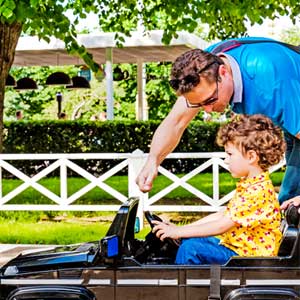Fisher-Price Power Wheels ride on cars can make for hours of entertainment and outdoor playtime. However, some children may quickly tire of the maximum speeds that they are designed to operate at and will want faster speeds.
For parents looking for a way to make their kid’s electric car go faster, this article provides research and helpful step by step instructions from one of the world’s leading Power Wheels aftermarket specialists, Lance Cheney, on how to safely and effectively make your toy car faster. Whether you’re looking to make an upgrade to the battery, replace the motor, or make other modifications, Lance’s helpful article will assist you to get faster speeds from your Power Wheels toy.
What’s in this guide
Swapping the Motor to Make Your Power Wheels Faster
The factory equips most Power Wheels ride-on cars with 550-sized motors, which are not the quickest, and are generally the same motors used in power tools. Most Power Wheels cars use this motor, and it runs at about 16,000 RPM (revolutions per minute). Some fast Power Wheels models use a motor that runs approximately 20,000 RPM, making for much faster maximum speeds.
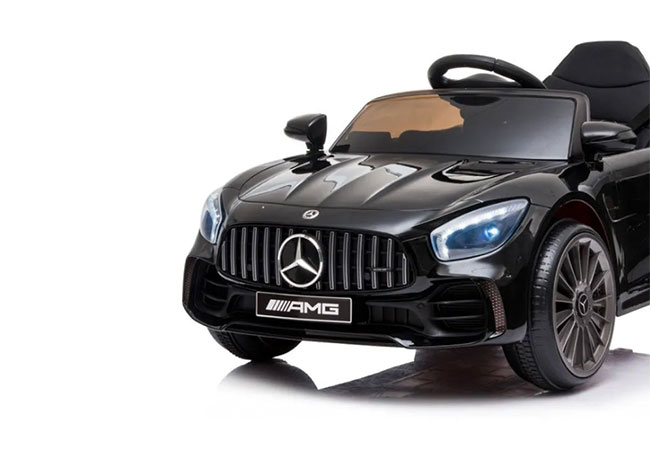
No-Load Speed Explained
The “no-load speed” is regularly quoted on a motor’s datasheet, it refers to the toy’s velocity when there’s nothing inside it to slow it down. On flat terrain, most Power Wheels toys will eventually reach the motor’s no-load limit due to low environmental friction. Using this knowledge, we can replace the motor with one of a similar size with a higher no-load speed at the same voltage, resulting in faster speeds.
When selecting a replacement electric motor for your Power Wheels, it’s essential to look at the nominal voltage, motor control board and the no-load RPM. For example, how does a 16000 RPM motor with a nominal voltage of 12v stack up against a 21v, 29800 RPM motor? Well, when run at 12v, the larger engine will run at 17000 RPM (29800 RPM / 21v * 12v), which is hardly an improvement over the original motor.
Instead, a good swap would be a Nichibo KC3SFN-8021F motor, a 12 volt motor with a no-load speed of 23,000 RPM. Switching the 550-sized motor in your Power Wheels ride-on vehicle with a stock engine that has a no-load speed of 16,000 RPM will result in a speed increase of (23000/16000) = 1.44x when there is little drag.
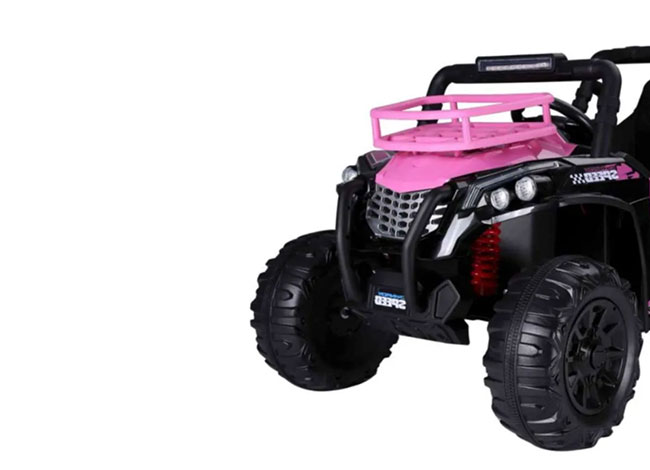
Most Power Wheels only reach a maximum speed of 5 mph (miles per hour). However, with this modification, your little one can speed off at 7mph, offering a faster speed while keeping the car safe for young drivers. Although, please note these engines aren’t suitable for running at higher voltage — more on this later!
Another modification you can make during a motor swap is switching to a larger engine. While this may sound tricky, it’s surprisingly easy to do in Power Wheels toys if the car’s body has space for a bigger case. Most parents upgrade to a 775-sized motor, roughly 40% heavier (~340-350g) than the standard 550-size (250-260g).
The increased case size and armature weight means it can dissipate more heat and tolerate longer durations of high-power operation. However, these motors typically have a 5mm-diameter central shaft vs the 3.17mm one on the 550-class engines, meaning they can’t use the same pinion gear. Don’t worry — gears kits of almost any size can be bought online or from your local hobby store.
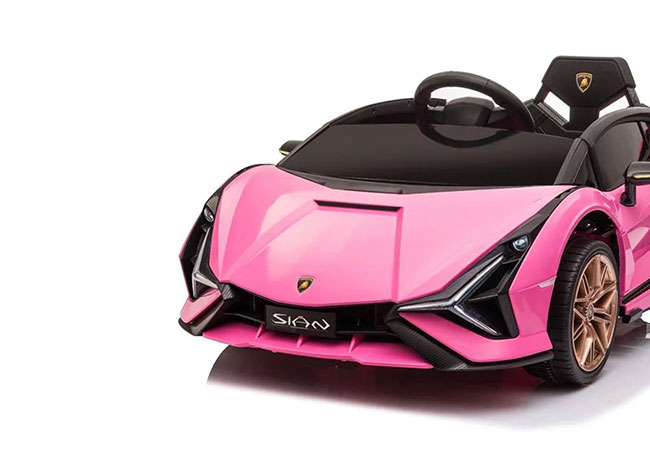
Looking for a more detailed overview of common Power Wheels car motor characteristics? Look at the example table below, where we compare six vital electrical specifications in several different Mabuchi Motors:

Here’s a breakdown of what each metric means
- Nominal voltage: The electrical voltage present during the motor’s regular operation and the basis of all the other specifications, including the no-load speed and current and stall torque and current.
- Operating voltage range: The manufacturer’s recommended voltage operating range.
- No-load speed (RPM): The actual motor’s speed when it’s not subjected to any external load and is supplied with the nominal voltage. It increases in proportion with the applied voltage.
- No-load current (amps): The amount of current required to overcome the motor’s internal friction when running at the no-load speed. Two sources are primarily responsible for this waste — brush and bearing (also known as bushing) friction. The no-load current is an essential parameter in Power Wheels cars as this frictional loss heats the engine, reducing its efficiency and lifespan. It increases with the RPM but is not linearly proportional.
- Stall current (amps): An inferred parameter indicating the amount of current a motor would draw when stalled (0 RPM) and powered by the nominal voltage. A higher-stall engine will create a more stressful electrical environment for Power Wheels toys with simple switches for motor control.
- Stall torque (mN*m): An indication of how much torque (rotational force) a motor will exert when supplied with the stall current’s amps. kV is a derived parameter acquired by dividing the no-load RPM by the nominal voltage (RPM/volts). A higher kV motor will run faster at a given voltage than one with a lower kV.
Okay, so now we’ve learned about the motor specifications, let’s examine a few trends from the table.
We have four motors – two 550-sized and two 775-sized. To make life easier, Mabuchi uses decodable motor names. For example, the RS-550PC-7524 includes the engine’s case size of “550”, its winding wire diameter of “75”, and the number of turns of wire on each pole, “24”. For the same case size, more turns mean a lower kV but a higher torque per amp.
If you want to pick a motor suitable for your Power Wheels purely for top speed, you need the highest kV possible:
| Motor | kV | RPM @ 12v | Stall Current @ 12v | Stall Torque @ 12v |
|---|---|---|---|---|
| RS-550PC-7524 | 1717 | 20600 | 76.5 | 421 |
| RS-550PC-7527 | 1375 | 16500 | 70.8 | 490 |
| RS-775VC-8015 | 1071 | 12857 | 80.7 | 731 |
| RS-775WC-8514 | 1083 | 13000 | 86.7 | 810 |
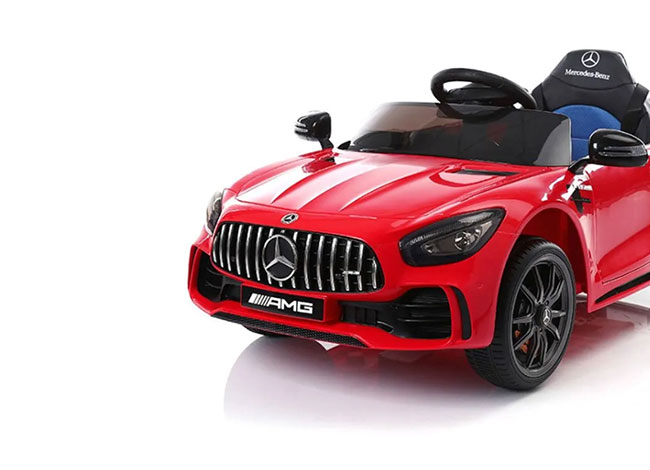
However, when combining this with a battery voltage increase, it might be best to choose a lower kV motor such as the RS-550PC-7527. This option reduces the chance of failure, as brushed motors of this size typically have a reduced lifespan when running over 25000 RPM.
You might also make the decision that increasing the torque of your Power Wheels toy is more important and opt to run a motor like the RS-775WC-8514. However, this engine can overstress a gearbox, especially when run at 18V, as the starting torque is much larger than the stock motor.
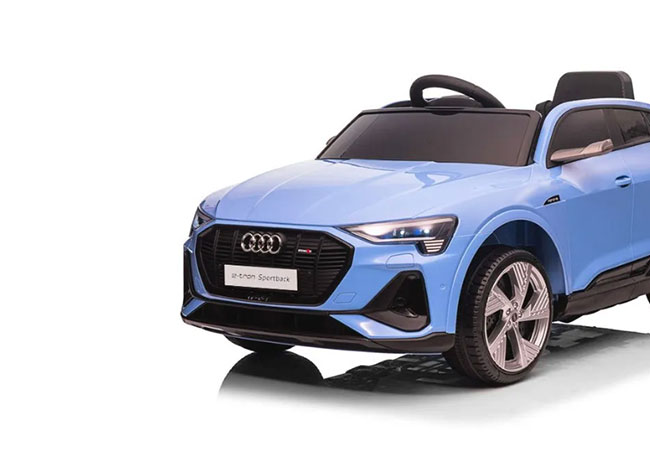
How to Modify your Power Wheels Voltage (Battery Power Increase)
Ride-on Power Wheels toys are usually supplied with a 6v, 12v or 24v battery. A battery powered motor’s no-load speed will increase linearly with applied voltage, presenting one of the simplest ways to get additional speed from children’s Power Wheels vehicles. Converting the toy from a 12 volt battery to a 18 volt battery will give your Power Wheels toy approximately a 50% faster top speed, while adding a 24v battery to the car will double its velocity.
However, before you make this change, there are a few things you need to consider:
- Are the toy’s electronics able to tolerate higher battery voltages? – Many newer Power Wheels come with remote or soft-start controllers that can’t handle higher battery voltages without further amends. While more basic Power Wheels have no electronics whatsoever, they use a set of switches to turn the motor on and off, move forward and back and change speed.
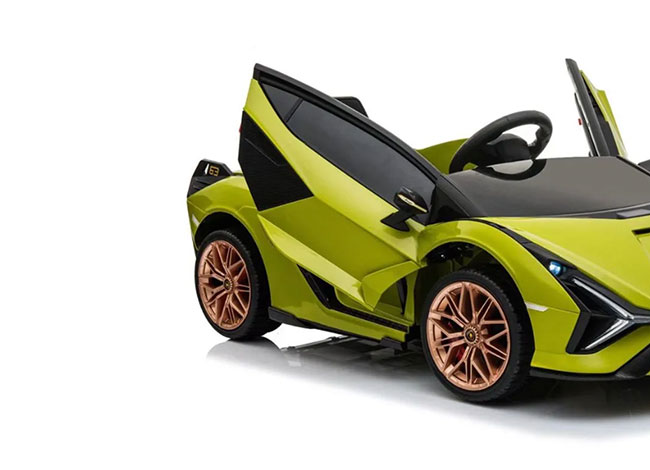
- Will the motor overheat? – Terrain plays a significant role in the temperature of the engine. Hilly or high-drag landscapes, such as thick grass, place a much higher energy load on the actual motor, and running it at full voltage can quickly push it out of the safe operating range, causing motor or gearbox failure. Switching from a 12 volt battery to an 18v battery will generally make 2.25x as much waste heat (V-squared).
- Will the starting torque damage the gearbox? – Increasing the battery voltage also amps up the current the motor consumes as it accelerates. Since the engine’s torque is typically proportional to the current, moving from a 12 volt battery to an 18v battery will result in a 50% rise in the peak stress.
- Will the increased current draw damage the switches or metal wiring connections? – The controls in a stock Power Wheels vehicle are usually rated for 30A continuous and are wired with 14ga wire. When your budding driver presses down on the pedal switch, both motors connect to the battery, pulling over 100 amps of current. While this is fine for a 30A switch as it is relatively low duration, increasing the motor to 24v would double the current and quadruple the heat-related losses.
If your child doesn’t drive the car in high-drag environments and the tyres slip a bit during startup, 18v Power Wheels stock engines are relatively reliable. But please note that attaching bike tyres or other traction add-ons to the wheels can create extra stress on the gearbox when driven on hard surfaces like concrete.
Also, on Power Wheels vehicles, there are multiple motor-gear pinion options: 15T, 16T, 17T, 19T, 21T and 23T. The higher-tooth-count options generate less stress on the gears when given the same motor configuration. In some ride-on Power Wheels toys, this quick amend opens the possibility of combining a gearbox swap and battery voltage upgrade, leading to faster speeds and better longevity than a voltage upgrade alone. We’ll explore this further in the gearbox section.
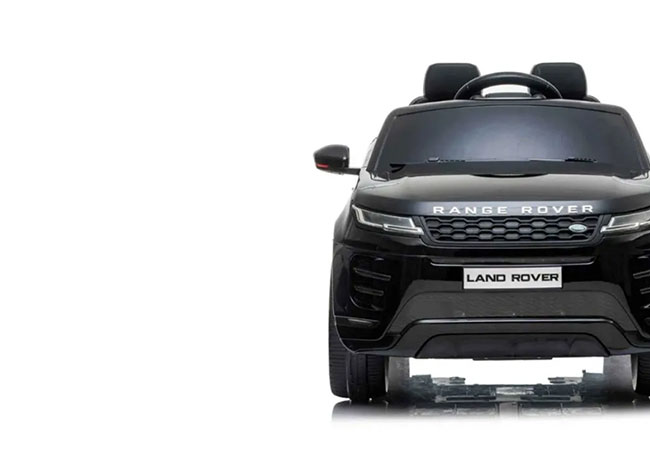
There are also several options for increasing the Power Wheels toy’s voltage supply from a 12 volt battery:
- Fit an additional battery alongside the original – This extra battery should have the same ampacity as the first to ensure it doesn’t get over-discharged during operation. The most straightforward way to do this is by replacing the stock battery with a new matching set of either 6 volt or 12 volt batteries to make an 18-volter.
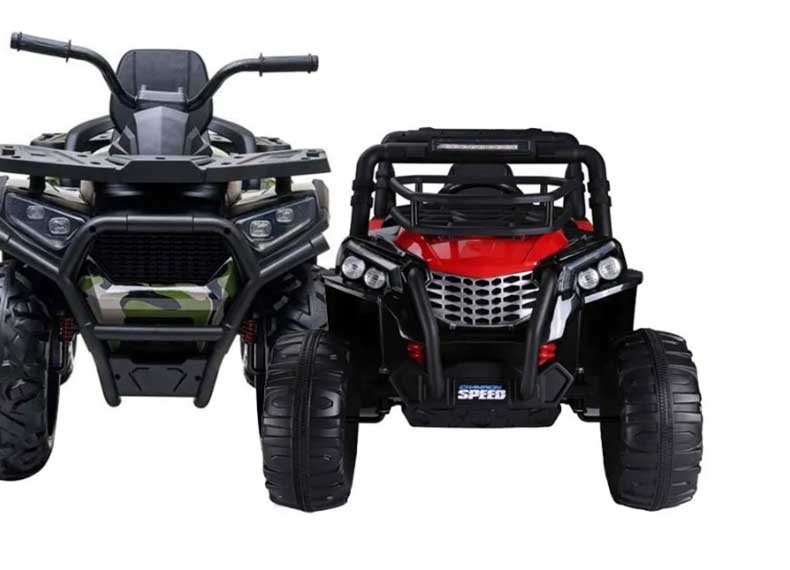
- Replace the original battery with a higher voltage one – Many DIY-loving parents use an 18v power tool battery — these typically have a 5S lithium-ion construction. However, do check the tool battery isn’t over-discharged, as this can cause permanent damage to the battery or even start a fire. Also, a tool battery will not have a built-in shutoff, building it into the power tool itself, so you’ll need to add similar functionality to your Power Wheels toy. The best way to achieve this is by adding a battery voltage meter (potentially with parental monitoring) or active shutoff.
- Utilise a step-up (or boost) converter that will convert a 12 volt battery to a higher voltage output. Although this is a possible solution, high-power off-the-shelf converters are expensive, so we suggest sticking with one of the above-mentioned methods.
Another point to remember is that a Fisher-Price Power Wheels car battery has circuit (thermal) breakers built into each unit. When replacing this with a standard sealed-lead-acid or tool battery, you must also add a 30A or 40A circuit breaker in series with either of the two supply leads.
Get Faster Speeds by Swapping the Gearbox or Changing Gears
The majority of Power Wheels toys use a multi-stage gear reduction to transform an electric motor’s high-RPM, low-torque output into a low-RPM, high-torque drive capability to push a 100+ pound vehicle.
How to work out the RPM of Fisher-Price Power Wheels
Most Power Wheels 12 volt toy cars utilise a “7R” gearbox containing four gears. By counting the teeth on each gear, we can determine their RPM:
| Input Teeth | Output Teeth | RPM | |
|---|---|---|---|
| Motor Pinion | 15 | 16000 | |
| First Gear | 72 | 25 | 3333 |
| Second Gear | 78 | 14 | 1068 |
| Third Gear | 45 | 12 | 332 |
| Final | 38 | 105 |
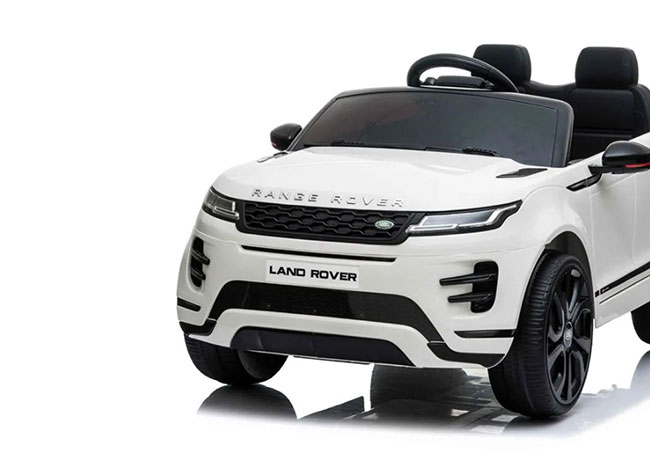
Theoretically, with a 15-tooth motor pinion, a no-load 16000 RPM motor would reach about 105 RPM at the output, with an effective gear reduction ratio of 152:1. This calculation means the output torque is 152 times the input torque, although friction losses will reduce the output torque in real life.
For example, here’s how you would calculate the average speed of the 15-tooth pinion on the Jeep Hurricane Power Wheels, which has a ~16″ diameter tyre:
105 Rev/min * (60 min/hour) * (16 * pi in/rev) * (1 ft/12 in) * (1 mile/5280 ft): 5.0 mph
On the hand, a Power Wheels Quad Bike has a ~10.5″ rear tyre but is listed as the same speed. Fisher Price utilised the same motor but with a 23-tooth pinion and a 7R gearbox, using the same gears but a different case layout to fit the larger pinion. Let’s calculate the relative RPM:
Relative RPM
| Input Teeth | Output Teeth | RPM | |
|---|---|---|---|
| Motor Pinion | 23 | 16000 | |
| First Gear | 72 | 25 | 5111 |
| Second Gear | 78 | 14 | 1638 |
| Third Gear | 45 | 12 | 510 |
| Final | 38 | 161 |
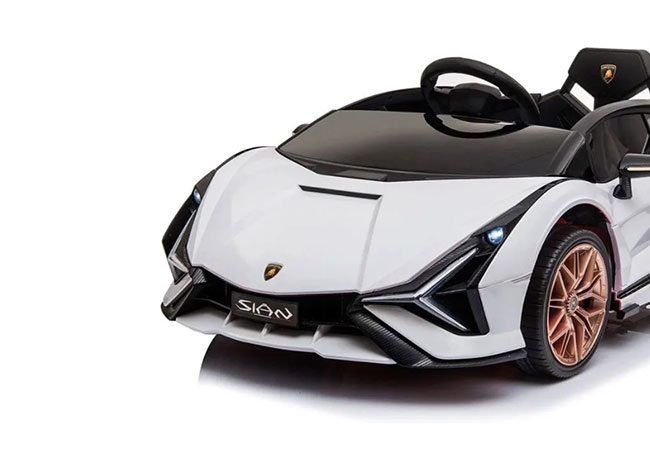
Effective ratio is (16000/161) = 99:1
161 RPM * (60 min/hour) * (10.5 * pi in/rev) * (1 ft/12 in) * (1 mile/5280 ft): 5.03 mph
Essentially, by taking that same gearbox and putting it in the Jeep Hurricane, you could give the Power Wheels toy a higher top speed (7.66 mph). All you’d need to do is drill out the hole to fit the bigger axle.
However, there is one major drawback. By reducing the gear ratio, you also reduce the torque applied to the wheel. The Power Wheels toy will now accelerate more slowly, which will make climbing hills a struggle. But why isn’t this a problem for the quad bike? Well, this comes back to a fundamental physics principle — the linear force exerted by torque is proportional to the inverse of its distance from the axis.
The Power Wheels toy’s acceleration is simply the linear force applied to the ground by the tyres (F) divided by mass. As the tyre gets bigger, you need more torque to maintain the same amount of force applied – and thus acceleration.
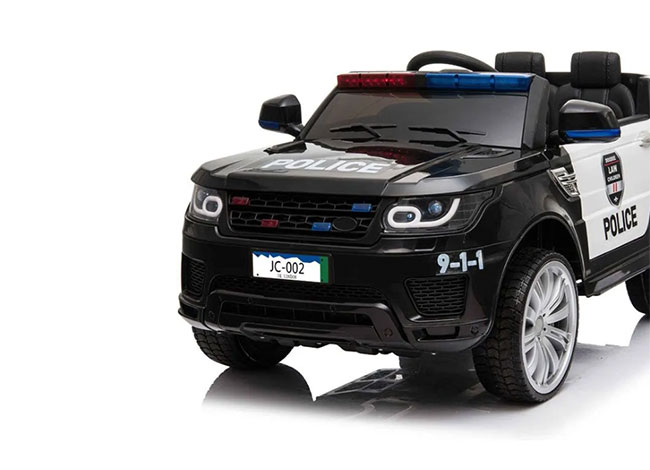
Another thing to consider is that the gearbox in the Jeep is under more stress than the quad bike as the torque applied to every gear is higher. The pinion on the quad (which has 23 teeth) has a larger radius than the 15-tooth pinion on the Jeep. Force = torque/radius, so a larger radius means less force at the gear tooth’s surface. This logic allows you to put in a higher-torque motor or increase the voltage on our 23-tooth gearbox with less worry about breakage vs 15-tooth gearboxes.
Now that we’ve explored the relationship between gearing, tyre size, torque, and vehicle speed, you can use this knowledge to get the fastest power combination possible.
Using what we’ve learnt, let’s analyse a Jeep Hurricane (16″ tyres, 15T gearbox) with a Mabuchi RS-775WC-8514 motor and 23T gearbox and run on 18-volts. We’ll use the Johnson HC683LG-001 specification sheet for a stock Power Wheels motor and calculate the vehicle’s top speed as above, using the gear ratio, motor RPM, and wheel diameter.
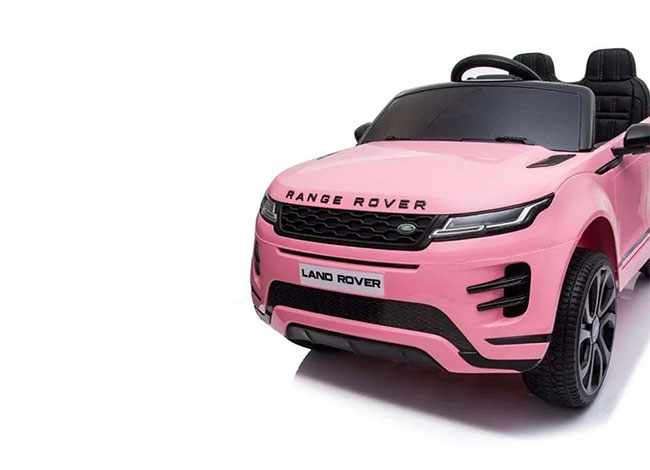
Maximum Theoretical Wheel Torque
The theoretical maximum wheel torque is the stall torque multiplied by the gear ratio. However, this is not a realistic number due to internal wiring and battery resistance. By modelling that as 0.2 ohms, you get a more accurate max wheel torque, which is about as good as it gets, even with a quality sealed lead-acid battery and 14-gauge wiring.
| Motor | Voltage | No-Load Speed | No-Load Current | Stall Torque (mN*m) | Stall Current (A) | Gear Ratio | Vehicle Speed (mph) | Theoretical Max Wheel Torque (N*m) | More Realistic Max Wheel Torque (N*m) |
|---|---|---|---|---|---|---|---|---|---|
| Stock w/15T box (stock) | 12 | 15700 | 1.18 | 400 | 61 | 152 | 4.9 | 60.8 | 30.1 |
| Stock w/23T box | 12 | 15700 | 1.18 | 400 | 61 | 99 | 7.5 | 39.6 | 19.6 |
| Stock @18V w/15T box | 18 | 23550 | 1.534 | 600 | 91.5 | 152 | 7.4 | 91.2 | 45.2 |
| Stock @ 18V w/23T box | 18 | 23550 | 1.534 | 600 | 91.5 | 99 | 11.3 | 59.4 | 29.5 |
| RS-775WC-8514 w/23T box | 18 | 19500 | 2.7 | 1215 | 130 | 99 | 9.4 | 120.3 | 49.2 |
One last important mention is that a lower-reduction (23T) gearbox requires more acceleration from a motor – effectively in a higher-load state. We think the Jeep Hurricane combination of the stock motor, 18-volts, and the 23T gearbox might generate too much heat in anything other than flat pavement running. The stock non-proportional speed control system (on/off) is also tricky to use in a 10mph Power Wheels ride-on vehicle toy.
The RS-775WC-8514 will make the best show here. At 18v, mated with the 23T gearbox, the maximum torque is not unreasonably high while improving the stock install, and the speed capability is excellent.
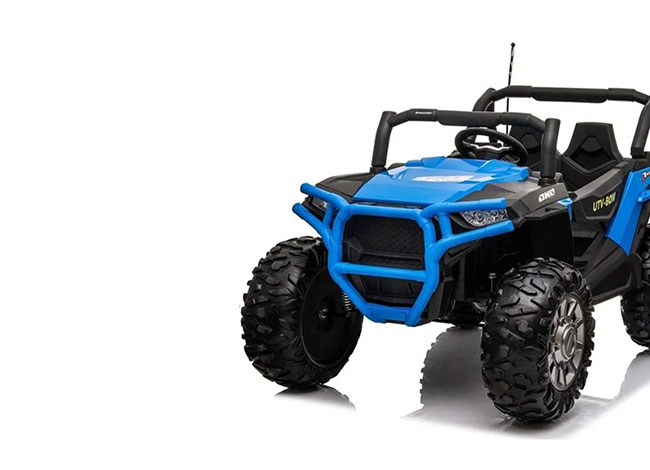
A Quick Note About the Electronic Speed Controller
Some advanced Power Wheels enthusiasts use speed controllers, motor controllers, ESCs, or “scooter” controllers. These allow the wannabe racer to proportionally vary the throttle or speed of the car and is a must-have feature for high speed tuned vehicles.
These controllers use a transistor-based design, typically MOSFET (also known as metal–oxide–semiconductor field-effect transistor), to rapidly turn on and off the motors with a varying duty cycle (% of ON-time). Almost all of these controllers will limit the current they provide to the engine to ensure they remain safe.
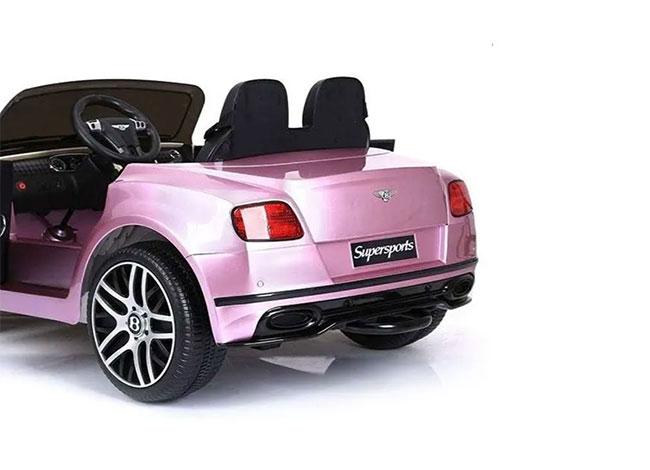
For many lower-cost scooter controllers, this current limit may be as small as 25 amps. In contrast, a more capable motor controller such as the Kelly KDS may provide 60-120 amps of continuous output, with higher burst output possible for intervals of 10s of seconds. Some controllers also have a soft-start function, which ramps up power gradually throughout 10s or 100s of milliseconds.
This current limit has two main effects. Firstly, it reduces the probability of gearbox breakage, especially when combined with the soft-start function. Secondly, it limits the maximum amount of torque available. With lower capability controllers, the latter can result in slow acceleration up hills or challenging environments, influencing gearbox and/or motor selection and placing a premium on “torque per amp”. To illustrate the effects of this, let’s revisit the gearbox-swap scenario previously discussed:
| Motor | Voltage | Stall Current (A) | Gear Ratio | Vehicle Speed (mph) | Theoretical Max Wheel Torque (N*m) | More Realistic Max Wheel Torque (N*m) | “Realistic” Scenario Current per Motor (A) | Realistic Per-wheel Torque with 25A Total Limit (2 Gearboxes) (N*m) |
|---|---|---|---|---|---|---|---|---|
| Stock w/15T box (stock) | 12 | 61 | 152 | 4.9 | 60.8 | 30.1 | 30.2 | 12.5 |
| Stock w/23T box | 12 | 61 | 99 | 7.5 | 39.6 | 19.6 | 30.2 | 8.1 |
| Stock @18V w/15T box | 18 | 91.5 | 152 | 7.4 | 91.2 | 45.2 | 45.4 | 12.5 |
| Stock @ 18V w/23T box | 18 | 91.5 | 99 | 11.3 | 59.4 | 29.5 | 45.4 | 8.1 |
| RS-775WC-8514 w/23T box | 18 | 130 | 99 | 9.4 | 120.3 | 49.2 | 53.2 | 11.6 |
| RS-775WC-8514 w/19T box | 18 | 130 | 120 | 7.7 | 145.6 | 59.6 | 53.2 | 14.0 |
By using an electronic speed controller, you can see there’s no torque advantage to running the Power Wheels vehicle at 18 volts – only gains in speed. Also, the RS-775WC motor’s evident “torque per amp” advantage gives it almost as much final torque in the 23T gearbox as the stock has with a 15T gearbox and still, allows a 27% better speed. Given such a limited controller, using the RS-775WC motor with a 19-tooth pinion may be the best-case scenario, as it will still make for a faster 7.7mph but will have a 13% torque advantage over the stock motor with a 15-tooth pinion.
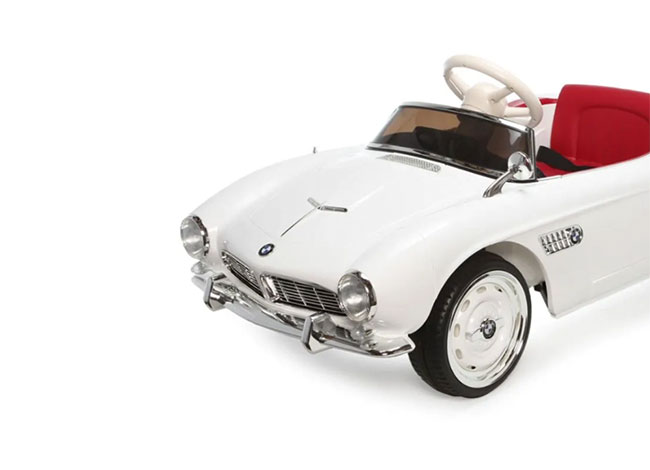
Also, in no case do the modified scenarios with the speed controller achieve the torque (and gearbox stress) of the bone-stock configuration, suggesting that reliability will be high, but acceleration and terrain flexibility will be poor. The drivability will be substantially improved across the board with a 60-amp controller.
About the Author
Hannah Hill
Entrepreneur, and mother of three. Hannah is a toy expert with 20+ years in the online toy industry, founding the Kidaroos website that sells 10,000+ toys per year. Hannah is always looking for new, innovative ways to keep everyone's kids active and energised in a world full of screens and social media and has been featured in publications such as Authority Magazine.
More Useful Guides
